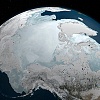Militarisation of the Arctic: Introduction
In
Log in if you are already registered
Nearly three years ago, Department Director at IMEMO and RIAC member Andrei Zagorsky went against the grain. He did not believe, as many did, that the Arctic has been witnessing a new period of militarisation due to increased tension over the region’s wealth of resources and newly accessible transport routes. He pointed out in an article published on RIAC's website that the region was host to only one major, permanent military force – Russia’s Northern Fleet – and the Arctic states had not, contrary to popular belief, stepped up their presence in the Arctic. Moreover, tensions between Russia and other Arctic states had reduced considerably since the end of the Cold War, ushering in a new era of cooperation. Political conditions have, however, deteriorated over the past few years; it is time to take stock of the situation.
Over the past three years, some things have not changed. For example, five of the eight Arctic states that compose the Arctic Council remain members of the NATO military alliance, while Sweden and Finland, which are Arctic Council but not NATO members, continue to debate the possibility of NATO membership. Since Zagorsky wrote his article in 2012, however, other aspects of the Arctic and, more broadly, global political climates have changed dramatically. Despite earlier improvements in US-Russian and NATO-Russian relations, disagreements over the situation in Ukraine have soured the tone of dialogue between Russia and other Arctic states. Following the events in Ukraine, all of Russia’s fellow members on the Arctic Council issued targeted sanctions against Russian individuals and businesses. Russia, responding in kind, banned food imports from all sanctioning countries, including all the Arctic states except Iceland. Given the political isolation of Russia in the Arctic and heightened tensions between Arctic states, political will regarding military installations in the Arctic has shifted back to support of militarisation. Just how militarised has the Arctic become?
Below, we discuss recent developments in the Arctic states’ military complexes through four regional instalments.
-Denmark, Iceland, Finland, Norway, Sweden
IV. The United States (to be published April 30)





